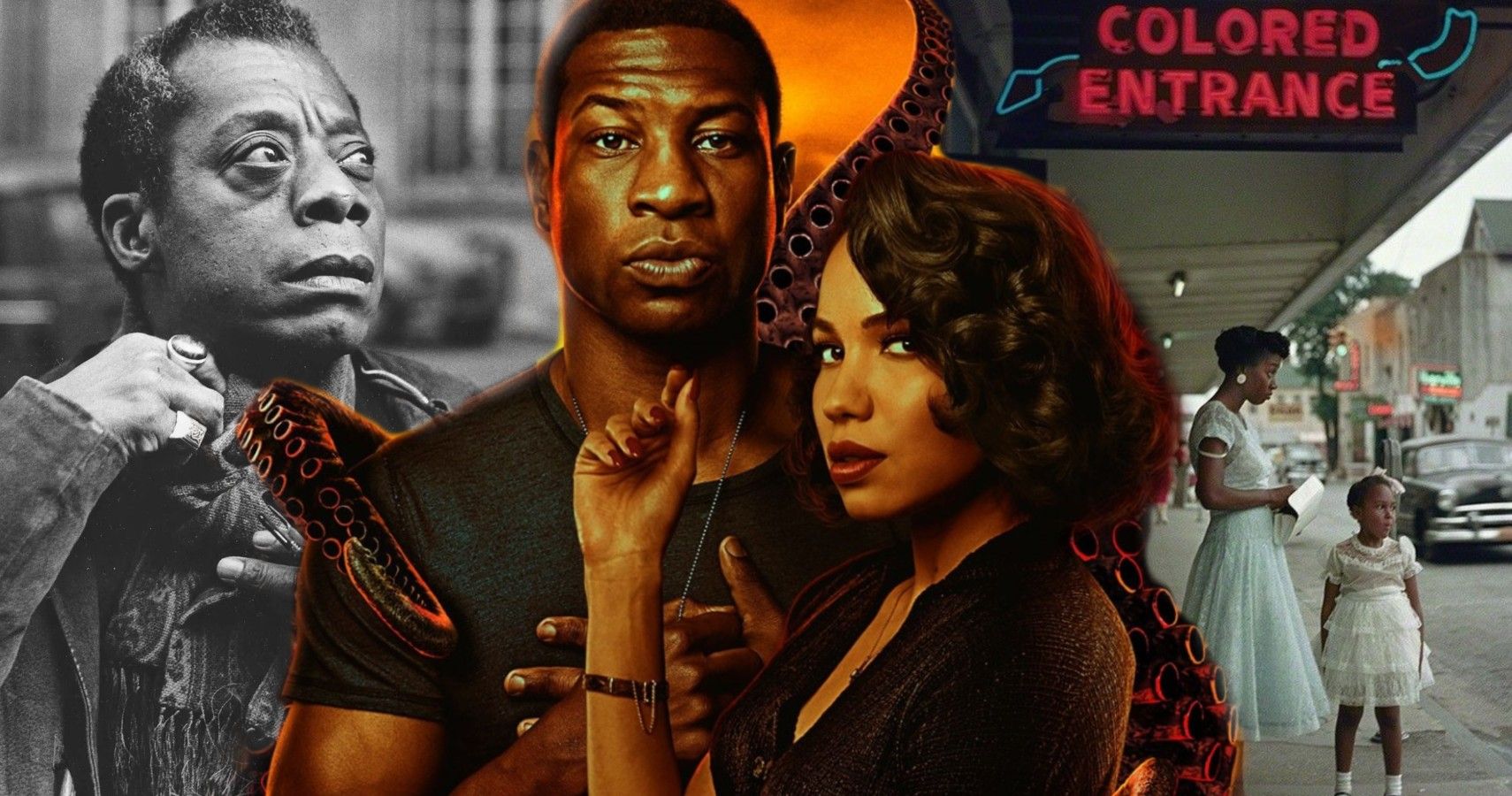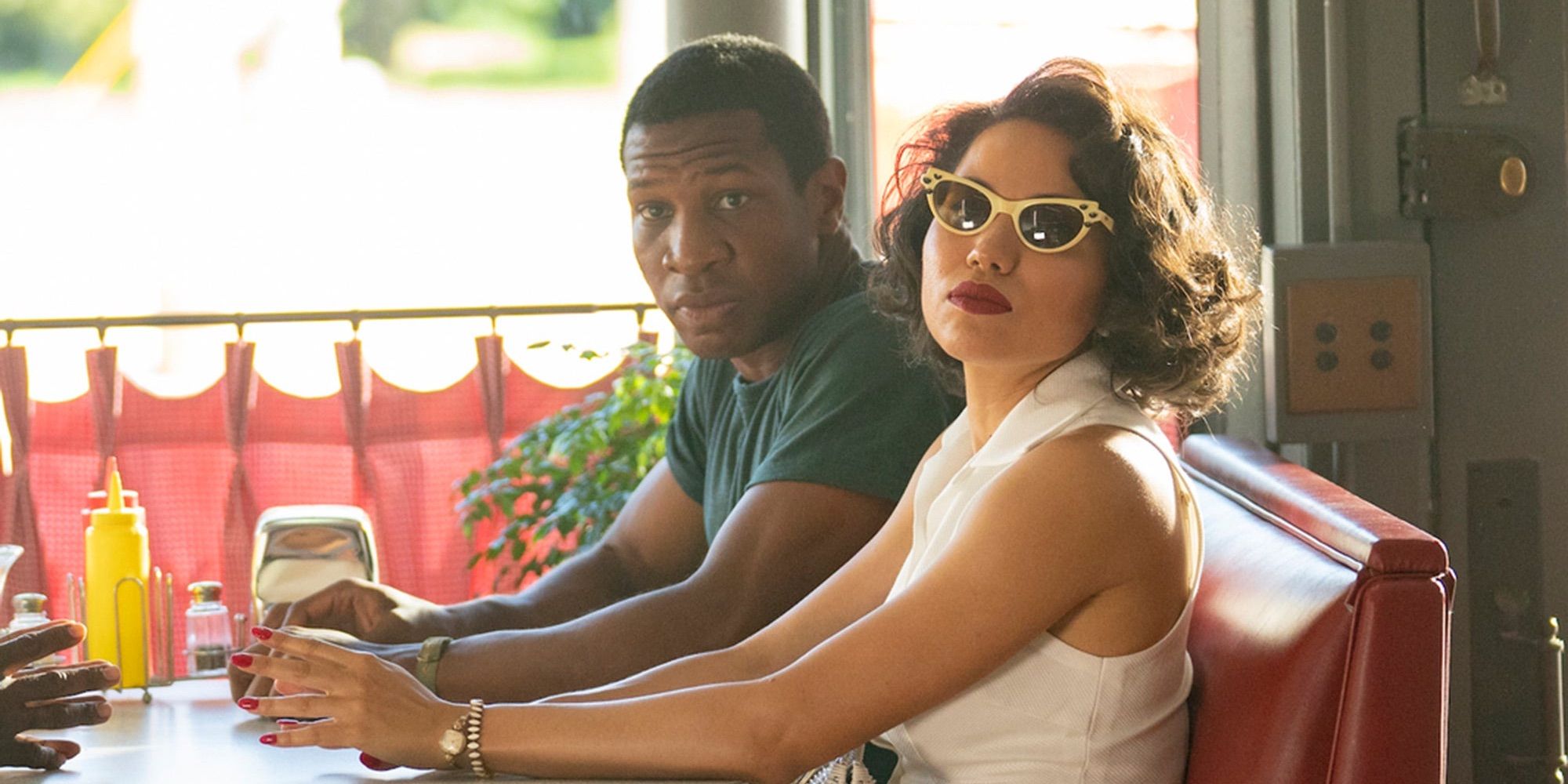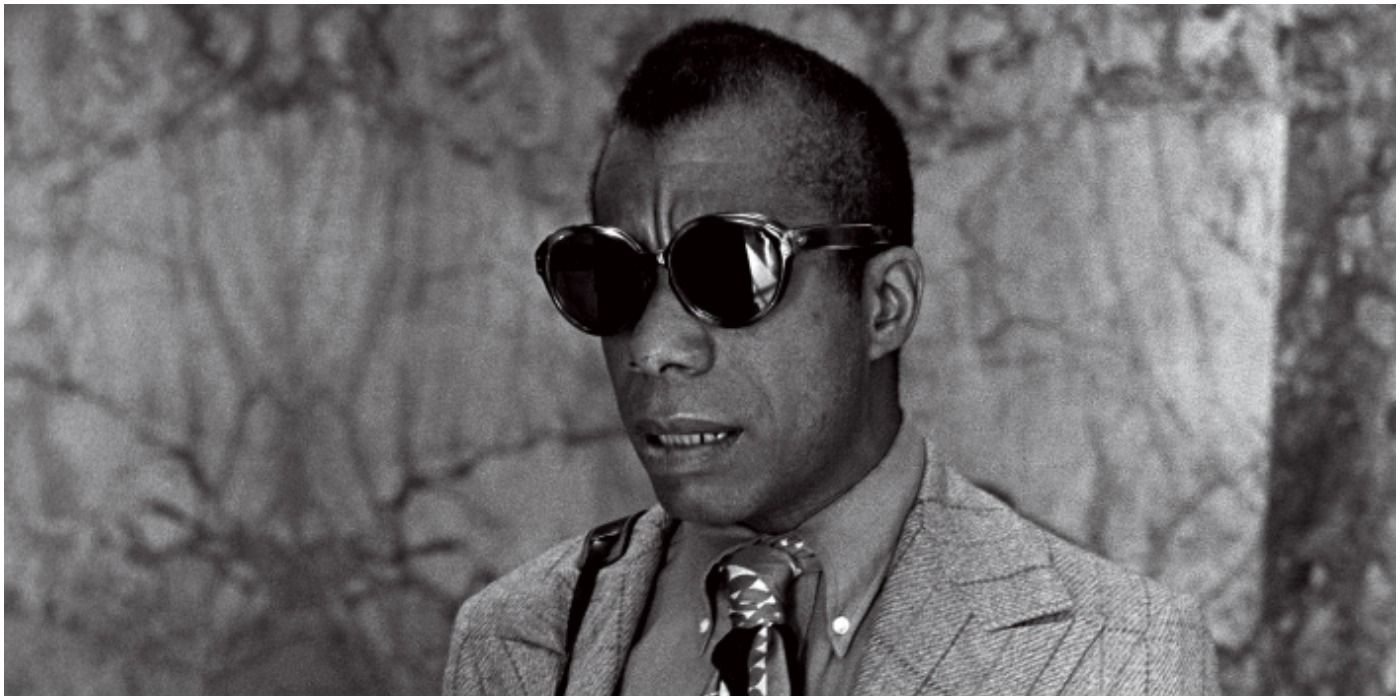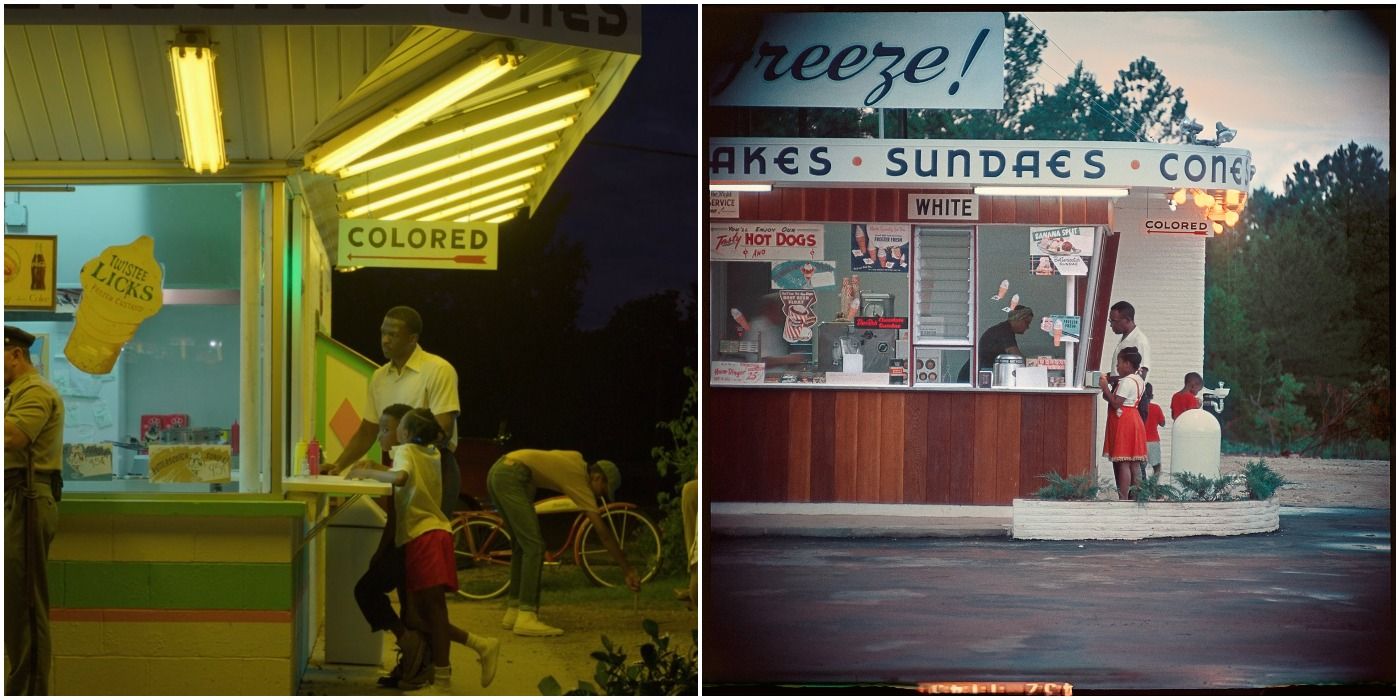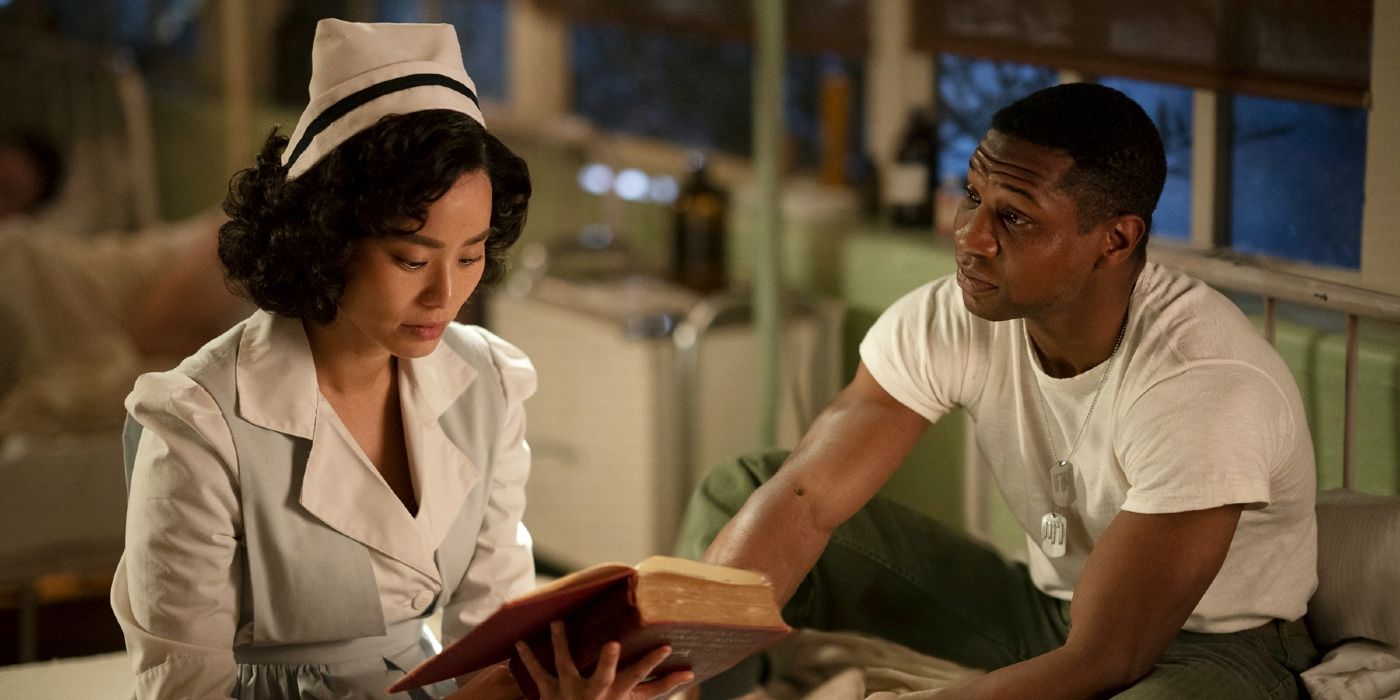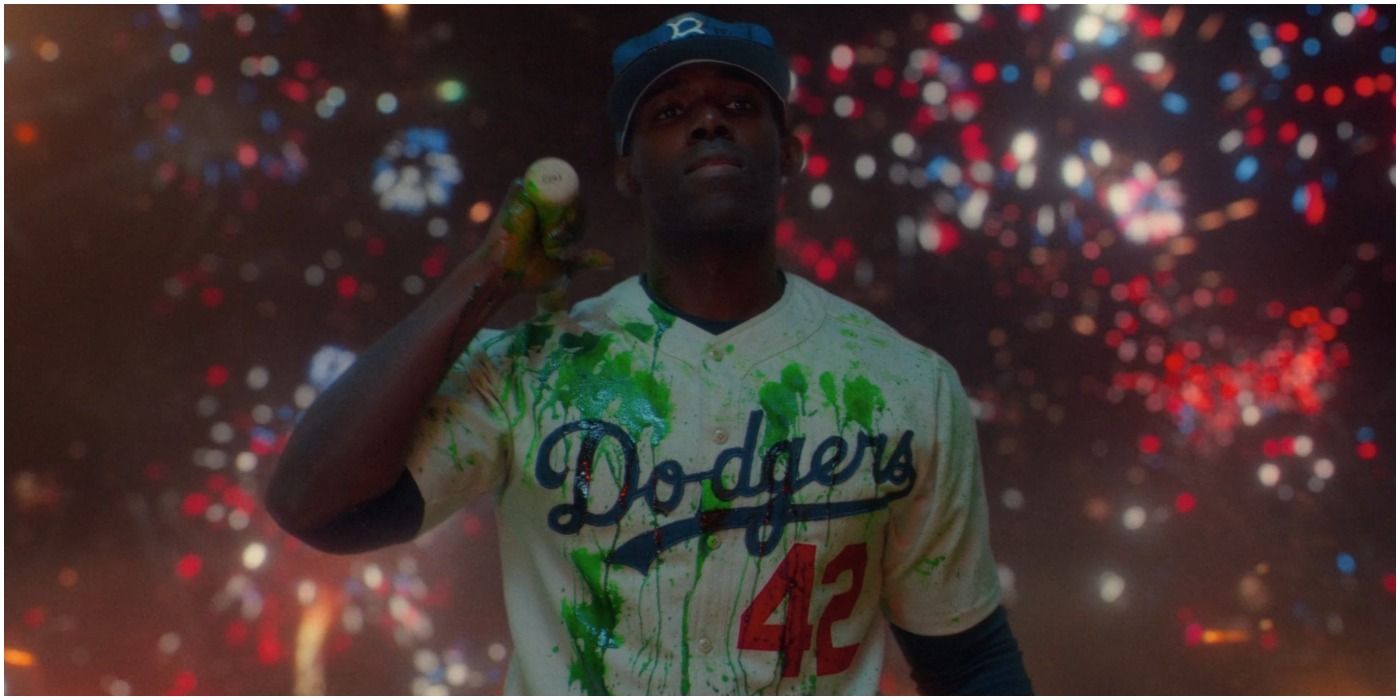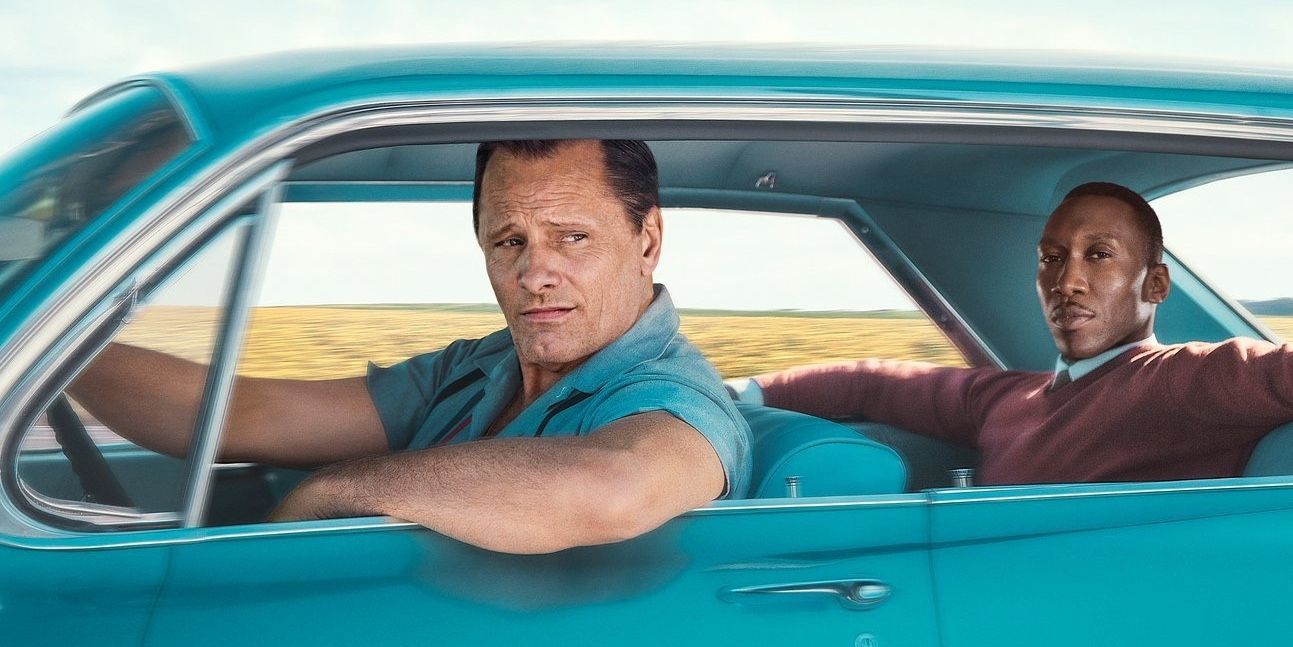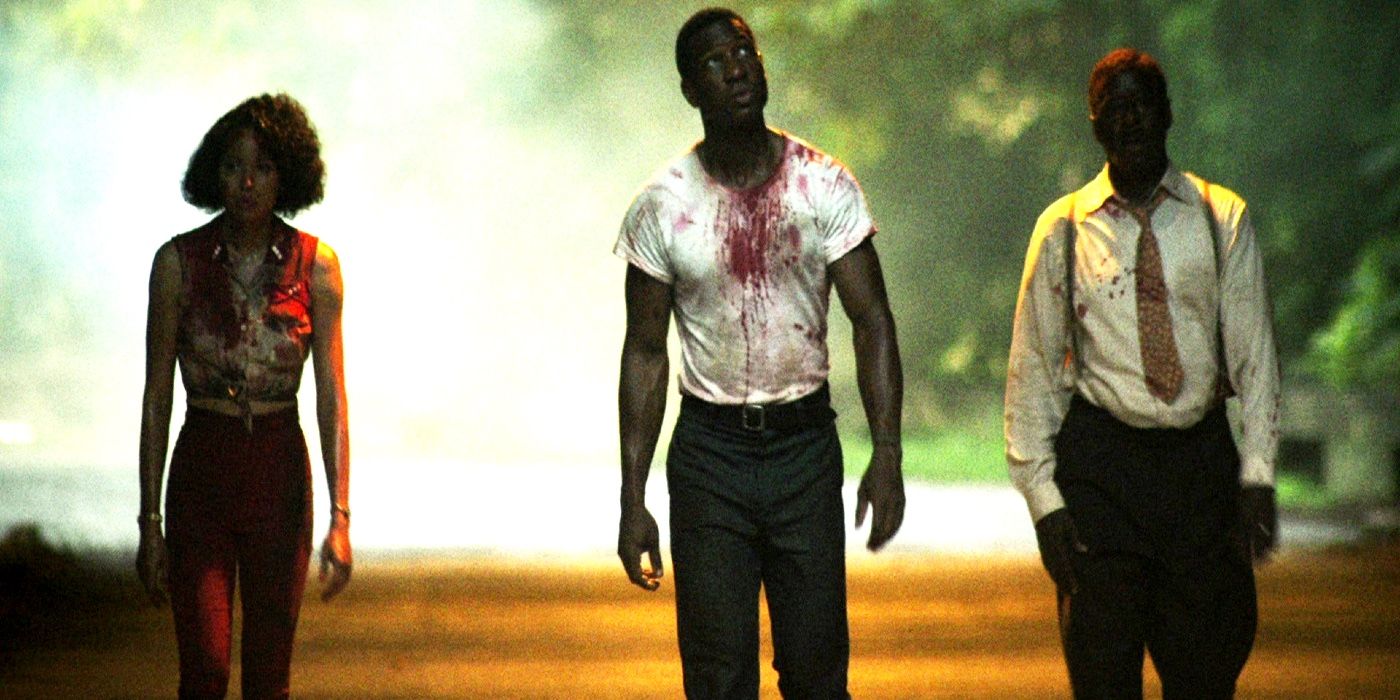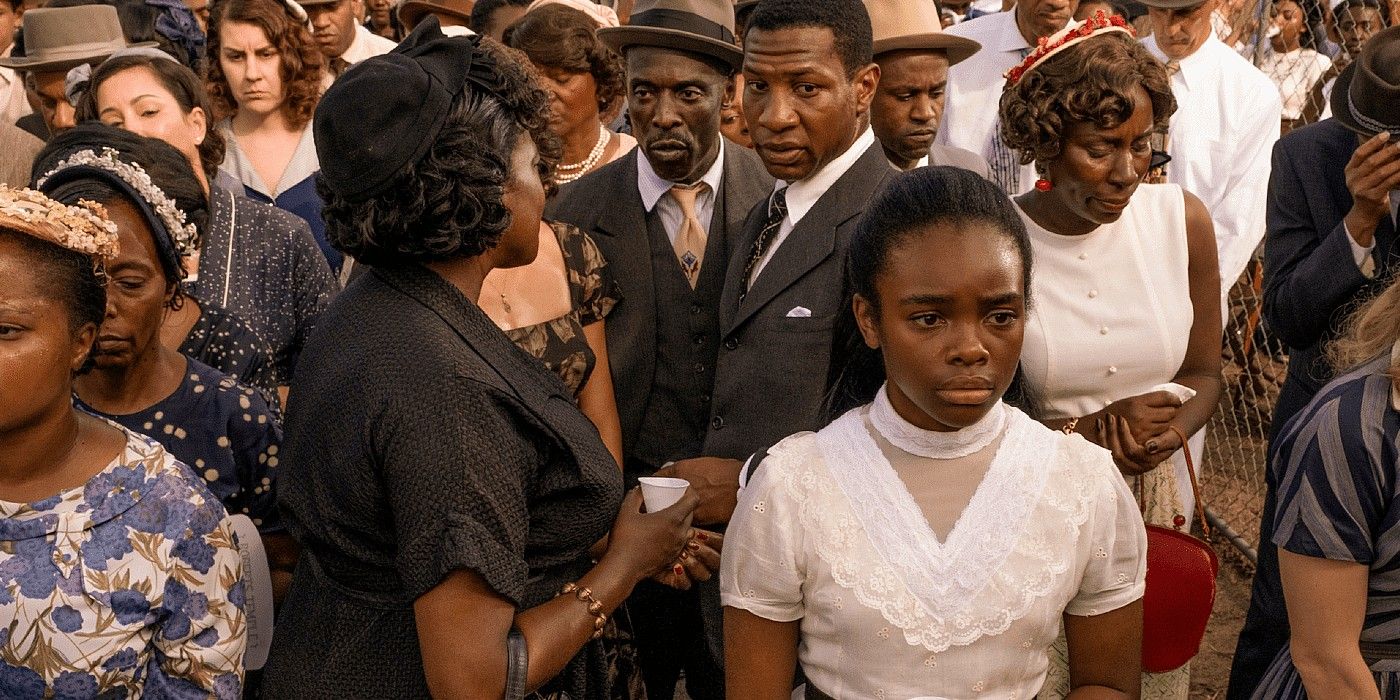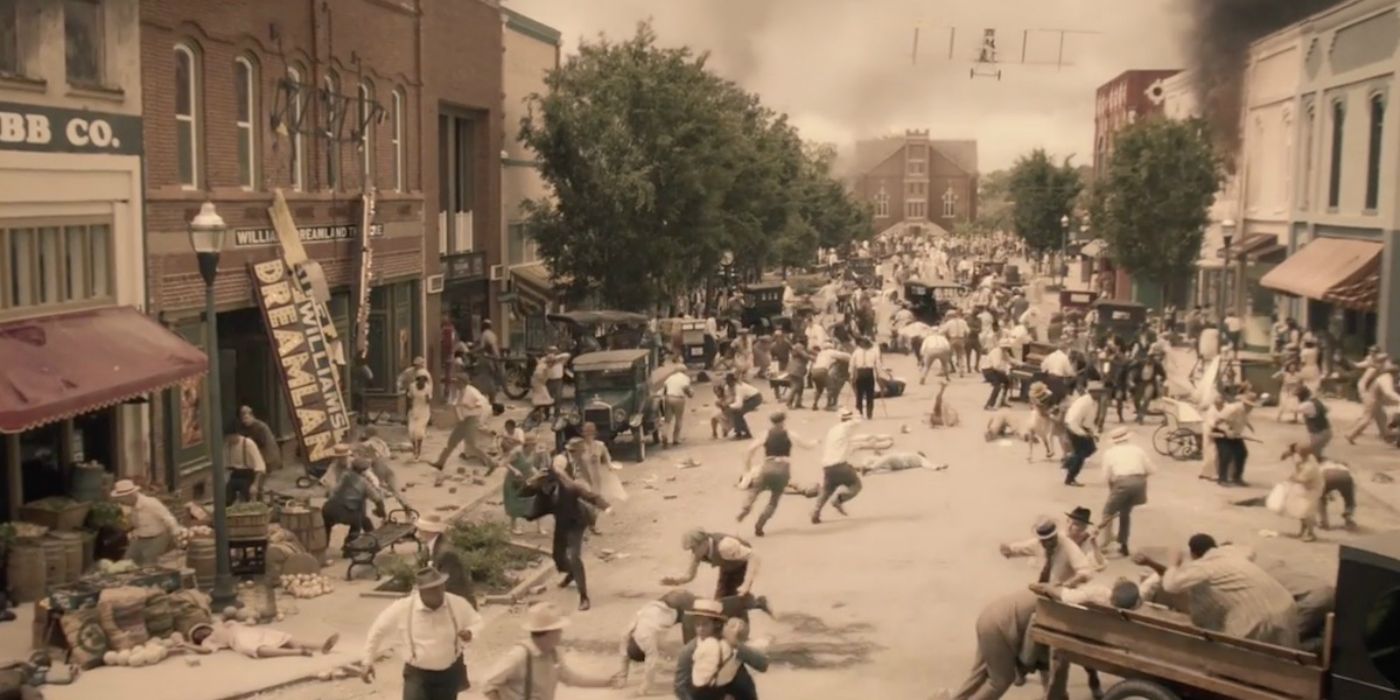HBO's Lovecraft Country is an extraordinary series that blends the pulpiest aspects of genres like horror and sci-fi with cold, sober reality. The show tackles the mythology of H.P. Lovecraft, whose work inspired many movies, as well as his tarnished legacy regarding race. The show considers American history in addition to mythology and leans as heavily on one as the other.
Every episode of the show's first season features a reference of some kind to events in American history, some of them well-known and some that deserve much more attention than they've ever gotten.
Trumball Park
In the third episode, Leti (portrayed by Jurnee Smollett, aka Black Canary from Birds of Prey) purchases a house in a white neighborhood in Chicago. Leti is always blazing trails but her sister Ruby worries about how this purchase is going to go over. As she nervously regards the silent stares of her potential neighbors, Ruby references Trumball Park.
Trumball Park is an actual neighborhood in Chicago where major race riots occurred in 1953 and 1954, just before the time period of Lovecraft Country. The inciting event in these riots was a Black woman moving into the white neighborhood.
Denmark Vesey
Early on in the series, Atticus Freeman (played by Jonathan Majors, soon to be Kang The Conqueror in the MCU) is searching for clues to the whereabouts of his missing father Montrose. He goes to a bar in Chicago called the Denmark Vesey Saloon. This isn't just any fictional bar, but it's actually a reference to a real person named Denmark Vesey, who died in 1822.
Vesey had been a slave at the end of the 18th century and bought his freedom for $600. He later tried to organize a slave rebellion in the United States and was hanged for his actions. Over thirty other men died with him.
The Works Of James Baldwin
In the first episode, Lovecraft Country gets very anachronistic with its music. It does so again in a haunting, moving moment as Atticus, Leti, and George travel through the Sun Belt toward Ardham and Montrose. As they travel, a portion of one of author/activist/playwright James Baldwin's most profound speeches is heard in the narration.
Baldwin debates conservative pundit William F. Buckley in 1965, ten years after the events of the series, but his words ring back in time as they do now. Baldwin questions the nature of reality, the American Dream, and whether the two can ever be reconciled.
Gordon Parks's Photography
Another aspect of American history referenced in the first episode is of a visual nature. As the group travels to the eponymous Lovecraft Country of Ardham, they make several stops along the way. As they do, the lines of society cleaving apart black and white are clearly demarcated in images that strongly recall the photography of Gordon Parks.
Parks' images from the '50s often focused on the bright, neon colors of the era when American peace and prosperity were at arguably all-time highs. Spoiling the images is the sad and unavoidable truth that as Baldwin said, it was simply a version of reality since the idyllic scenery of classic Americana did a poor job of covering up (or didn't even bother to try doing so) the nation's inherent racism, which is still felt today.
The Korean War & The Kumiho
A major component of the series and the life of Atticus is the Korean War. This particular conflict is often referred to as "The Forgotten War," since barely anyone outside of historians talks about it. This is due to the fact that it took place right after World War II and was immediately overshadowed by the coming Vietnam War. Atticus is a veteran of Korea, which left him with physical and mental scars in the form of PTSD, though not all of them came from the battlefield.
While his strange relationship with Ji-Ha is fictional and unique to the show, as it's not in Matt Ruff's novel, her condition does have a mythological basis in the legend of the Kumhio. A well-known legend in Korean folklore, the Kumiho is an immortal white fox that can shapeshift into a beautiful woman, a form it uses to lure men in before eating their hearts.
Baseball Legend Jackie Robinson
The opening scene of the first episode is a tour de force of genre references, but there are historical ones as well. Atticus moves across a battlefield that includes aliens from War of the Worlds and Martian women from The Princess of Mars. Then emerging out of the haze to murder Cthulhu with a homerun is none other than real-life baseball legend Jackie Robinson.
Robinson was the first African-American player in Major League Baseball. His life was the subject of a biopic, The Jackie Robinson Story, and he was also portrayed by the late and brilliant Chadwick Boseman in the movie 42.
The Negro Motorist Green Book
Atticus' uncle George Freeman is the author and distributor of the Safe Negro Guide To Travel, a document that was sadly based in reality. George's book, used by African-Americans to safely travel in the United States (necessary for them, as will soon become clear) was based on the Negro Motorist Green Book.
This document, which listed hotels, restaurants, and even towns that were amenable to Black travelers (and those that weren't) was also the subject of the Oscar-winning Green Book. The Green Book's usage in Lovecraft Country is a more poignant and harrowing reenactment of Jim Crow-era racist policies and their implications compared to the movie, which was more concerned about how white men felt about racism than the Black people who actually suffered from it.
Sundown Towns
A cruel fact of life for African-Americans far too long into the 20th century was the concept of the Sundown Town. These communities were predominantly white and intolerant to the presence of Black people, to the point that these communities didn't want Black people to be in the area after dark. This was accomplished through threats of violence and even death.
Atticus, George, and Leti are trapped in one such community at the end of the first episode, which leads to their violent and shocking first encounter with the monsters of Ardham, Massachusetts.
The Death Of Emmett Till
The most recent episode of the series dealt with the death of Emmett Till. Emmett had actually been subtly set up early in the series with the introduction of the character Bobo, which is actually the real-life nickname of Emmett. Emmett is a sad symbol of why something like the aforementioned Negro Motorist Green Book was necessary for its time.
The fourteen-year-old Emmett traveled to Mississippi in 1955, where he was accused of offending a white woman in a grocery. He was then brutally lynched and his white murderers were acquitted. This is an incident that has proven all too familiar recently, with Emmett being murdered for doing nothing more than simply being in a violently racist part of America at the wrong time. Emmett has since become a figure of the Civil Rights movement.
The 1921 Tulsa Race Massacre
One of the most significant moments in American history - and one of the least discussed, at least until recently - was the Tulsa Race Massacre of 1921. This horrendous moment saw the deaths of untold numbers of African-Americans and the destruction of a community that was referred to as "Black Wall Street" at the hands of an angry white mob.
Lovecraft Country refers grimly to this event. As it turns out, the Freeman family fled Tulsa for Chicago and thirty years later, the massacre haunts them still. The event also factored heavily into the backstory of the Emmy Award-winning series Watchmen, which is also another HBO show. Watchmen has been credited for reviving interest in the Tulsa Massacre, which is a topic often ignored and glossed over in history classes.

